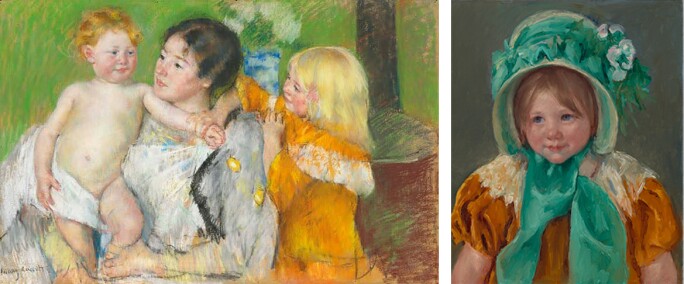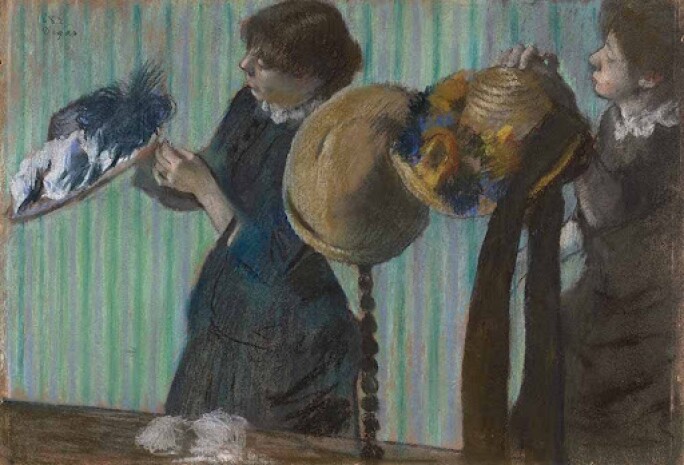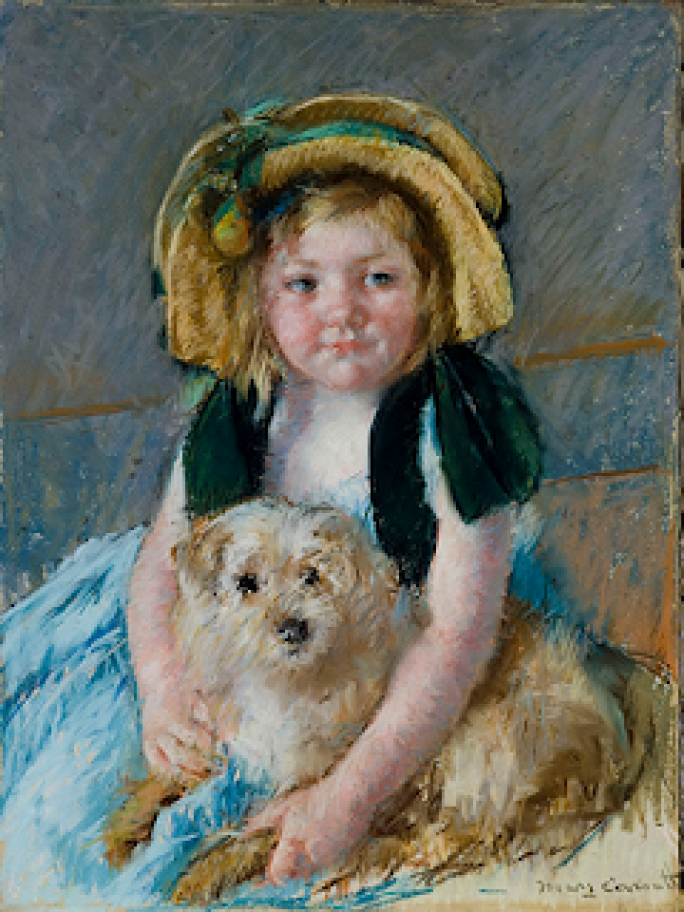Expressing the world of Belle Époque childhood with an honesty and directness that avoids the overtly sentimental, the present work is a highly accomplished and vibrant example of Mary Cassatt’s mature practice, exhibiting the sophistication of her color sense and technical handling of pastel in the luminous accents throughout.
The sitter in the present work is Sara, a young model who appears repeatedly in Cassatt’s work after the turn of the century. Sara’s sweetly expressive face and spirited, but well-mannered disposition made her one of Cassatt’s favorite models, with two of her earliest appearances in After the Bath, 1901 (fig. 1) and Sara in a Green Bonnet , 1901 (fig. 2).

Right: Fig. 2. Mary Cassatt, Sara in a Green Bonnet, circa 1901. Smithsonian American Art Museum, Washington D.C.
In 1877, at the invitation of her friend Edgar Degas, Mary Cassatt became the only American artist to join the French Impressionist group in Paris. Although she initially studied with more traditional academic painters and regularly submitted her work to the Paris Salon, through her acquaintance with Degas, Cassatt grew familiar with the techniques that would come to define the Impressionist style (fig. 3). She particularly admired Degas’ work in pastel and his constructive criticism and continual efforts to introduce her to new techniques had a lasting effect on Cassatt’s mature style.

Cassatt wrote to her friend Louisine Havemeyer around 1915, “how well I remember nearly forty years ago seeing for the first time Degas’ pastels in the window of a picture dealer in the Boulevard Haussmann. I would go there and flatten my nose against that window and absorb all I could see of his art. It changed my life. I saw art then as I wanted to see it” (Lousine W. Havemeyer, Sixteen to Sixty, New York, 1993, p. 275). Like Degas, Cassatt became increasingly obsessed with the pastel medium and by the 1890s it had become her primary means of expression.

Pastel allowed Cassatt to reveal her accomplished draftsmanship, while displaying a rich layering of color and tone. This medium allowed for the rapid sketching that was vital to her lively treatment of the intimate world of women and children that preoccupied her from 1880. Around 1900, Cassatt began working on a series of vibrantly colored pastels depicting elaborately dressed young girls in big hats against simple interior backgrounds (fig. 4). Nancy Mowll Mathews writes, “in the course of revising her approach to the mother and child theme, Cassatt embarked on a series of pastels, drawings, and drypoints of children that preoccupied her for the rest of her working career. She had painted children many times before, but there had always been an obvious incentive, either a portrait commission or contact with her young nieces and nephews” (Mary Cassatt, New York, 1987, p. 125).